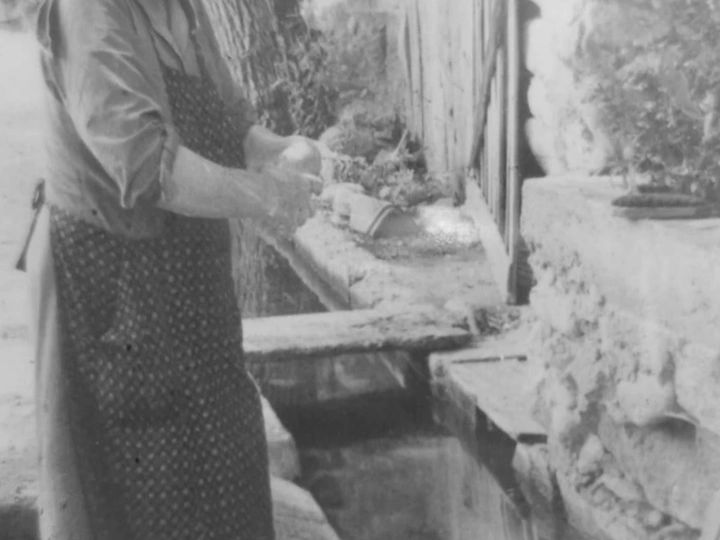Habitar a água / Inhabiting water

My name is Chloé Darmon, I am French from the suburbs of Paris, my family is from Corsica and other parts of the south of France, the majority lives in Nice, but I live in Portugal since 2018. From this mediterranean culture, I try to incorporate my personal archive into my research, because as an immigrant, I can find my roots through old photographs and the sense they make in other location. I did part of my studies at the Ecole Nationale Supérieure d’Architecture de Paris-Belleville, and the rest at Faculdade de Arquitectura da Universidade do Porto (FAUP). I worked as an architect for four years, and afterwards I enrolled as a PhD student with a grant from the FCT (Funding Agency in Portugal) at Universidade da Beira Interior (UBI) in the city of Covilhã. My interests are in the intersection between architecture, feminism, and critical thinking, and also have cities as objects of studies. I think the fact that I speak French, Portuguese, English and Spanish is an achievement, also, considering my family background, with little financial conditions, I was able to be the first to enter higher education. I published several papers and books about my research work, and I am currently entering the second year of my PhD. Outside of the field of architecture, I did a lot of activisms in feminist organisations and students organisations. This is important to create a sense of community, because we create friendships that afterwards reverberate on our design practice and work. I also do activism within the architectural field, recently I co-curated an exhibition about women and the struggle for housing during and after the Carnation Revolution called “Arquitectas da Liberdade”, an itinerant exhibition organized by the Women in Architecture association that I am part of. I think that is also part of my ethic compromise with the research, that we are situated and the knowledge we produce is also situated, so for me my activism is complementary to my practice.
The proposal came from my master thesis in architecture in 2020 at FAUP about the public washhouses of Porto and is about documenting women’s urban practices. Through this project it was possible to take my research work from academia to the city and the urban space. The idea is that the study of washhouses - public spaces in ruins today in Porto - allowed to understand the link between women, water, and the construction of the public space. Habitar a água links the past to the present, the public and the personal, to create an archive of women and water. Those spaces in ruins are in risk of demolition but are potential water spaces for cities that lack this because of climate change. So, in this proposal, architecture is confronted to hidrofeminism, ecology and the feminist critic to infrastructures, to think about the future of the washhouses. It started as a way to transmit my findings to a broader public, but in the end allowed me to cross paths with other women (artists, curators, architects). The project Habitar a água was presented nationally and internationally, with people starting to send me pictures of the washhouses in Europe but also in Latin America, and it spread from there. My methodology and practice pass through the oral testimonies of working class women. I use crossed histories to understand that the memory of the washhouses and laundry is something international that represent the work of care, the transition between the urban and the rural, between the domestic and the public. My idea is to show that there is another way of thinking critically about architecture and that we have to start thinking as an ecosystem, and also that the knowledge of the people that practice the space is valuable for us to think and draw from, from the house to the building to the public space. This project also has an artistic dimension: performances, textiles, water, walking tours, which helps create an interaction between architecture, water, and the public.